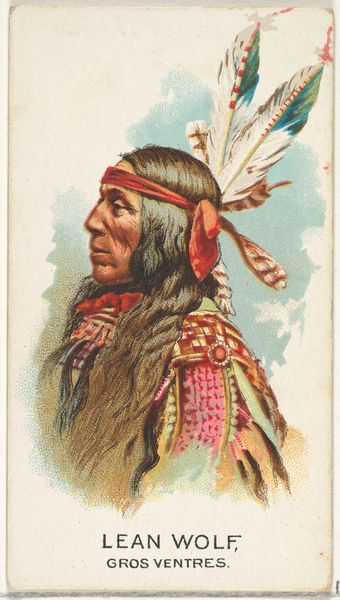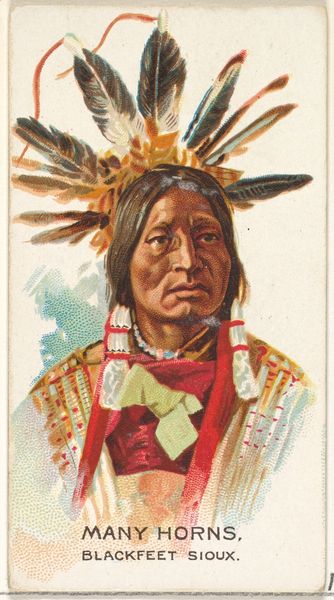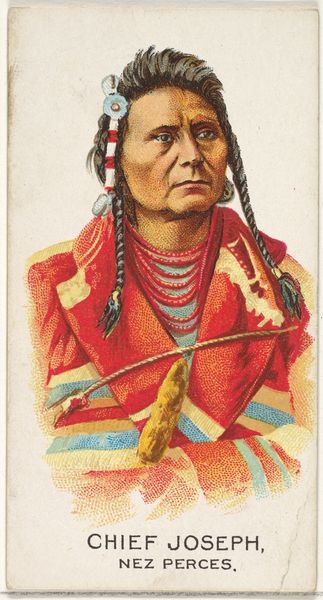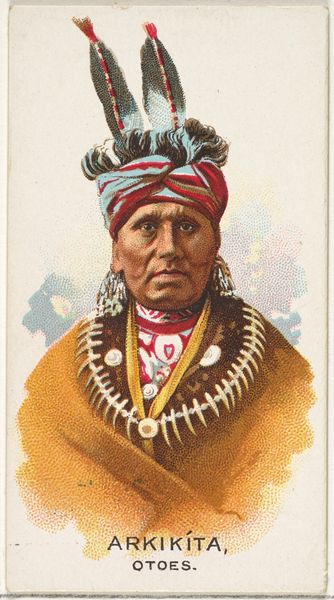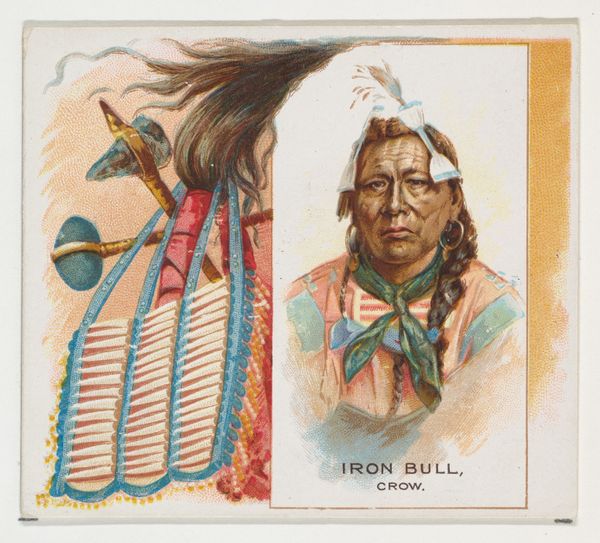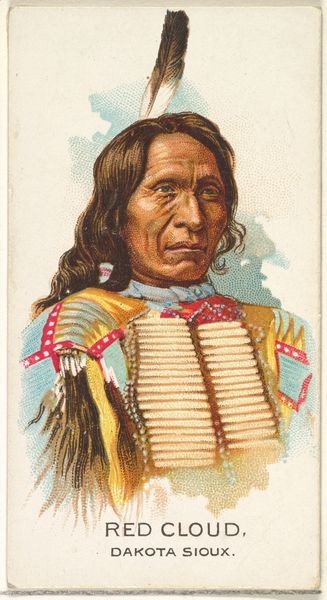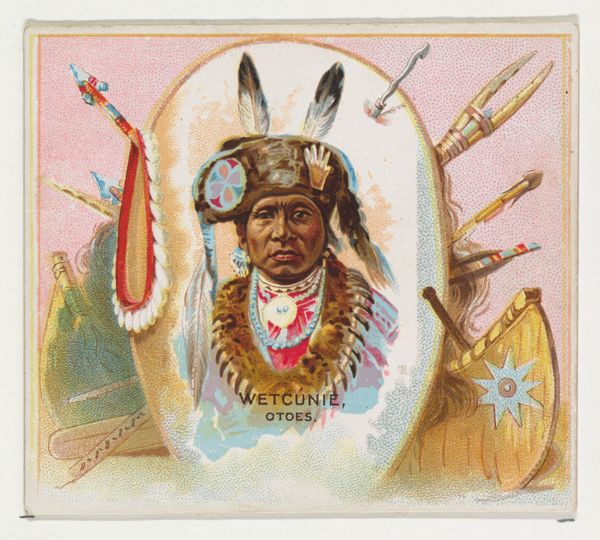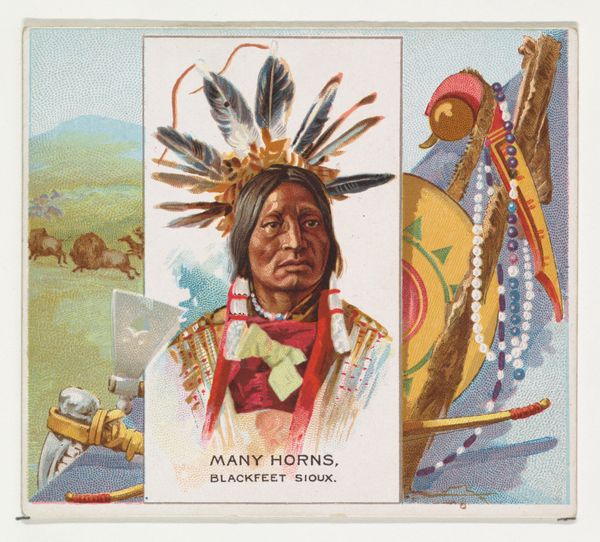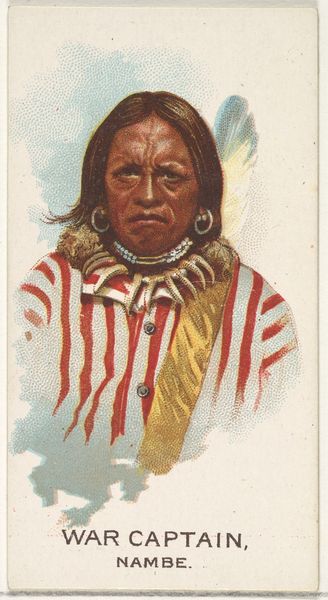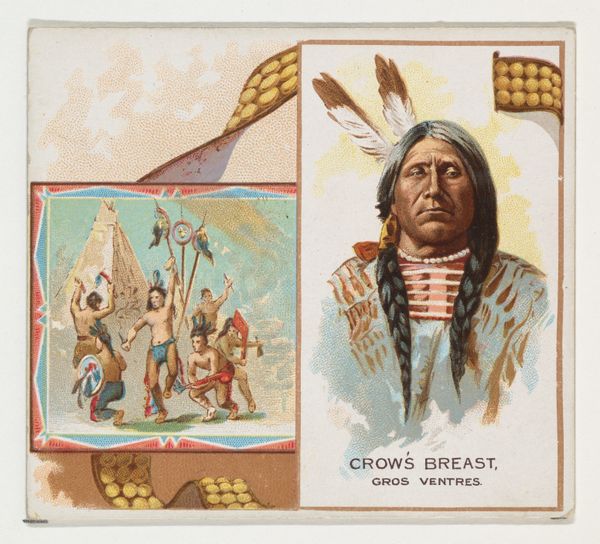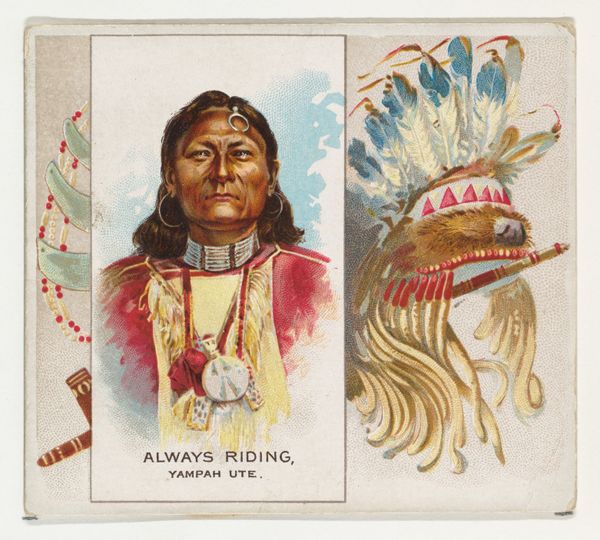
Arkikita, Otoes, from the American Indian Chiefs series (N36) for Allen & Ginter Cigarettes 1888
0:00
0:00
drawing, coloured-pencil, print
#
portrait
#
drawing
#
still-life-photography
#
coloured-pencil
# print
#
caricature
#
caricature
#
coloured pencil
#
coffee painting
#
men
Dimensions: Sheet: 2 7/8 x 3 1/4 in. (7.3 x 8.3 cm)
Copyright: Public Domain
Editor: This is "Arkikita, Otoes, from the American Indian Chiefs series," made in 1888 as a color print by Allen & Ginter. It looks like a portrait of a Native American chief, but the style seems almost cartoonish. What should we be looking at here? Curator: Let’s consider the context. This was a trading card, included in cigarette packs. How do you think that affects its representation of Arkikita and his culture? Editor: Well, it’s clearly not striving for strict accuracy, right? It feels more like a commercial object appropriating a culture for profit. The depiction feels…flat. Curator: Exactly. These cards romanticized and, frankly, commodified indigenous identity. The “Chiefs” series was part of a larger narrative, a visual language used to justify westward expansion and the marginalization of Native Americans. Editor: So it's more than just a portrait; it's a form of propaganda? Curator: Precisely. Think about the visual shorthand used here: the headdress, the clothing. These elements are presented as symbols, but stripped of their cultural significance. This image participates in a larger colonial project that othered and erased indigenous experiences. Editor: I see. It's disturbing to think about how these images normalized those ideas back then. Now, seeing it displayed as art makes me question the institutions exhibiting it. Curator: And that’s exactly the conversation we should be having. By confronting the historical context and understanding how these images functioned, we can challenge the narratives they perpetuate and create space for more equitable representation. Editor: It definitely reframes how I view not only this image but similar portrayals of indigenous peoples during that era. Thanks!
Comments
No comments
Be the first to comment and join the conversation on the ultimate creative platform.
